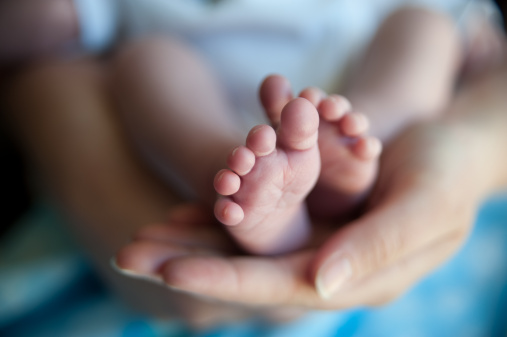It takes special care and attention to keep a baby’s skin soft and healthy.

Because babies have extremely delicate skin, it takes special care and attention to keep their skin soft and healthy,” says Dr Lushen Pillay, a specialist dermatologist who practises at Netcare Waterfall City Hospital.
According to Dr Pillay, minor skin problems may arise from time to time and parents will, for the most part, be able to easily treat these at home.
He lists a number of skin care tips that will assist caregivers to treat some of the most common skin conditions that can impact babies.
Bath-time basics
- Don’t go overboard. There is no need to bathe your baby every day; too much tub time can dry out your baby’s tender skin, but more importantly, babies don’t get dirty enough to need daily baths.
- When you do bath your baby, make sure you limit the time in the water to a few minutes, and use only allergy-free soaps and baby shampoo.
- Pat your baby dry instead of rubbing the skin.
- Apply fragrance-free lotion or baby oil immediately after bathing.
- Do daily spot checks in between baths. Your newborn’s skin care routine should include sponge baths. Use a warm, wet washcloth and focus on the mouth and skin folds where the dirt tends to build up as well as the nappy area. Always sponge from the top down and save the nappy area for last.
Nappy changing time
According to Dr Pillay, nappy rash most often arise from nappies not being changed often enough or when they fit too tight.
- Change nappies regularly to ensure that the nappy area does not stay moist for a prolonged period of time.
- Make sure you wipe the area clean. To begin with, cotton balls and plain warm water are the best for easy, gentle clean-ups. Some baby oil on a cotton ball makes it easier to clean faeces that are sticky. When your baby is a few weeks old, you can start using alcohol and fragrance-free baby wipes.
- Again, pat your baby’s skin dry rather than rubbing it!
- Apply a protective nappy lotion like zinc oxide, titanium oxide or petroleum jelly, which helps to protect the skin from irritation caused by urine or faeces. Never use talcum powder as babies may inhale the fine talc, which can cause respiratory problems.
- Give your baby some nappy-free time, especially if the weather is warm. This will help to prevent or heal nappy rash.
- Try a different brand of nappies if, despite your best efforts, your baby keeps getting nappy rash frequently.
Sun protection
“It is important to remember that baby skin is always very sensitive to sun,” cautions Dr Pillay. He recommends the following to protect your infant from the potentially harmful rays of the sun:
- Babies should be kept out of direct sunlight until they are at least six months old.
- When you do go outside into the sun, dress your infant in protective clothing such as a hat, long sleeves and pants. Make sure the clothing is lightweight and breathable so your baby does not get too hot. Overheating will make your baby uncomfortable, and can possibly cause a heat rash.
- Use baby-friendly sunscreen with an SPF of 30 or higher and re-apply this frequently to exposed skin, including the face and the tops of the little hands and feet.

Picture: Thinkstock
Don’t let the bugs bite
- Babies make delicious treats for pests. It is therefore best to avoid places where there are lots of insects, and be particularly sure to stay away from malaria areas.
- Make sure your baby is covered up when you go outdoors.
- You can use natural citronella-based bug repellents on babies under two months of age.
- For babies older than two months, normal insect repellent sprays are usually safe to use, but it is best to wipe your baby down when returning indoors.
- Spray insect repellent on your hands and then gently rub it onto the baby’s exposed skin, avoiding the mouth and eyes.
Keep it clean
- Use a gentle detergent to wash everything that touches your infant’s skin, from bedding and blankets, to towels and even your own clothes. This will reduce the likelihood of your baby developing irritated or itchy skin.
- Make sure you wash all new outfits before your baby wears them.
- Most babies won’t react to normal washing powders and detergents. If your baby develops an allergic rash your doctor may recommend switching to a special sensitive soap.
Nappy rash
“A nappy rash usually starts on the buttocks and genital areas, and can spread to the abdomen and upper thighs. The skin may appear puffy and red.
Rashes can develop for a number of reasons including a wet nappy left on for too long, allergies to cleaning soaps and powders or the nappies themselves, or the skin may chafe against a nappy that is too tight. Nappy rash can also be caused by infections from bacteria or yeast, especially after a course of antibiotics,” says Dr Pillay.
“When it comes to treatment going back to nappy basics is best,” he explains.
- Make sure you change nappies regularly to ensure the nappy area remains clean and dry.
- Clean the nappy area well at each nappy change.
- Use fragrance-free and allergy-free soaps and washing powders.
- Plain aqueous cream is usually a good choice for a hypoallergenic cleaning agent. You could consider a trial with a different brand of disposable nappy.
- Use a barrier ointment like white zinc oxide at each nappy change after cleaning. This protects the skin from the ammonia in urine and stool, which may irritate the inflamed area.
- Make sure the nappy is not too tight a fit as chafing will only worsen a rash.
- If possible (and if it is warm enough), give your baby some time without any nappy or applying ointment. Airing the area will help the rash to heal faster. Consider letting your baby sleep with bare buttocks. A plastic sheet under the cloth sheet will help protect the mattress.
Do call the doctor if the rash looks as though it may be infected (has blisters, pus-filled pimples, oozing yellow patches, or open sores), if it fails to get better after treatment, or if your baby develops a fever.

Image courtesy stock.xchnge (monigirl)
Heat rash
Showing up as small pinkish-red bumps, heat rash usually appears on the parts of your baby’s body that are prone to sweating, like the neck, nappy area, armpits, and skin folds. A cool, dry environment and loose-fitting clothes are all you need to treat prickly heat rash, which can even be brought on in winter when baby is over-bundled. Try dressing baby in layers that you can easily remove as it gets warmer during the day.
White bumps (milia)
As many as one in two newborns develop little white bumps known as milia. Usually appearing on the nose and face, they are caused by skin flakes blocking the oil glands. Milia are sometimes called ‘baby acne’, but true baby acne is related to hormonal changes. In this case, baby skin care is easy, as a baby’s glands open up over the course of a few days or weeks, the bumps usually disappear and need no treatment.
Acne
“Babies really do get acne. It looks very similar to the whiteheads and pimples seen in teenagers. It may be present at birth or show up a few weeks after birth. It usually affects the forehead, cheeks, chin and back. Baby acne is thought to be caused by hormonal changes after birth and sometimes from medication in breastfed infants,” notes Dr Pillay.
“Most of the time baby acne will clear up by itself, usually within a few weeks although it can linger for months.
Avoid using over-the-counter acne treatments on your baby’s skin as these are often harsh and can cause damage. Wash your baby’s face twice daily with baby soap. Don’t use any oils on the face as these could worsen the acne. You should speak to your doctor if the acne persists for more than three months,” he adds.
Baby birthmarks
More than one in ten babies have birthmarks. Birthmarks, or areas of skin discoloration, are not inherited. They may be there when your baby is born, or they might show up a few months later. Generally, birthmarks are nothing to worry about and need no treatment. But, if your baby’s birthmark worries you, be sure to discuss it with your doctor.
Atopic dermatitis or eczema
“Eczema is an itchy, red rash that occurs in response to a trigger. It is common in children who have a family history of asthma, allergies, or atopic dermatitis. Eczema may occur on your baby’s face as a weepy rash.
“Over time it becomes thick, dry, and scaly. You may also see eczema on the elbow, chest, arms, or behind the knees. To treat it, identify and avoid any triggers. Use gentle soaps and detergents and apply moderate amounts of moisturiser. Your doctor may recommend a short-term steroid ointment to treat the eczema,” says Dr Pillay.

Image courtesy: Stock.xchng.
Dry skin
Babies often have peeling, dry skin, particularly if they are born after the due date. Fortunately the underlying skin is usually healthy. Use baby oil immediately after bathing your baby to moisturise the skin, and avoid bathing your baby too often.
Cradle cap
Cradle cap can show up during a baby’s first or second month, and usually clears up within the first year. Also called seborrhoeic dermatitis, cradle cap is caused by excess oil and shows up as a scaly, waxy, red rash on the scalp, eyebrows, eyelids, the sides of the nose, or behind the ears and looks a lot like dandruff.
“You can treat cradle cap by cleaning your baby’s head every day with a mild baby shampoo. Baby oil, olive oil or petroleum jelly rubbed into the scalp can help loosen crusts and scales. Rinse the oil off before shampooing, and then gently scrub the scalp with a soft-bristled brush or soft toothbrush for a few minutes to remove the scales. Wash the scalp with baby shampoo, rinse well, and gently towel dry.”
Consult your doctor before considering using stronger anti-dandruff shampoos, which are designed for adults.
Bites and stings
If your baby has a red raised bump (or a few), it could be a sign that some insects have been snacking. Calamine lotion or a mild 1% steroid cream can help soothe the itch and bring swelling down. Try to find out the source of the insects, as insects often target babies.
“Caring for a baby’s skin is actually very simple. Stick to the basics such as keeping it clean and dry, avoid anything that’s scented or not baby-friendly, and avoid irritants, insects and sun exposure. Never use adult products for babies. However, if in doubt speak to your doctor about your baby’s skin requirements,” concludes Dr Pillay.
//
For more news your way, follow The Citizen on Facebook and Twitter.






